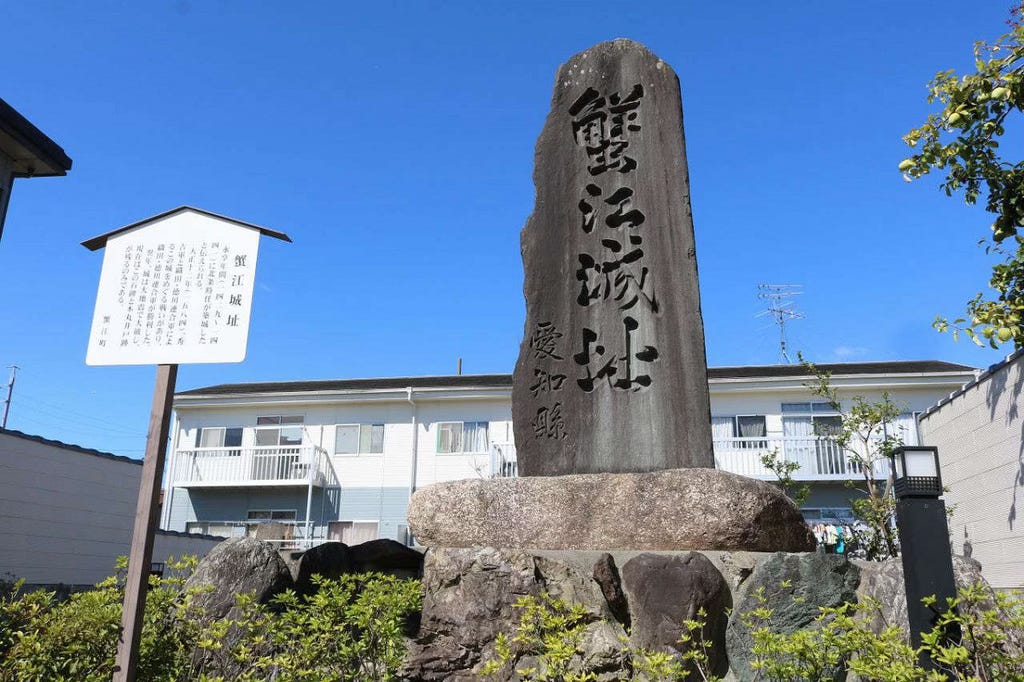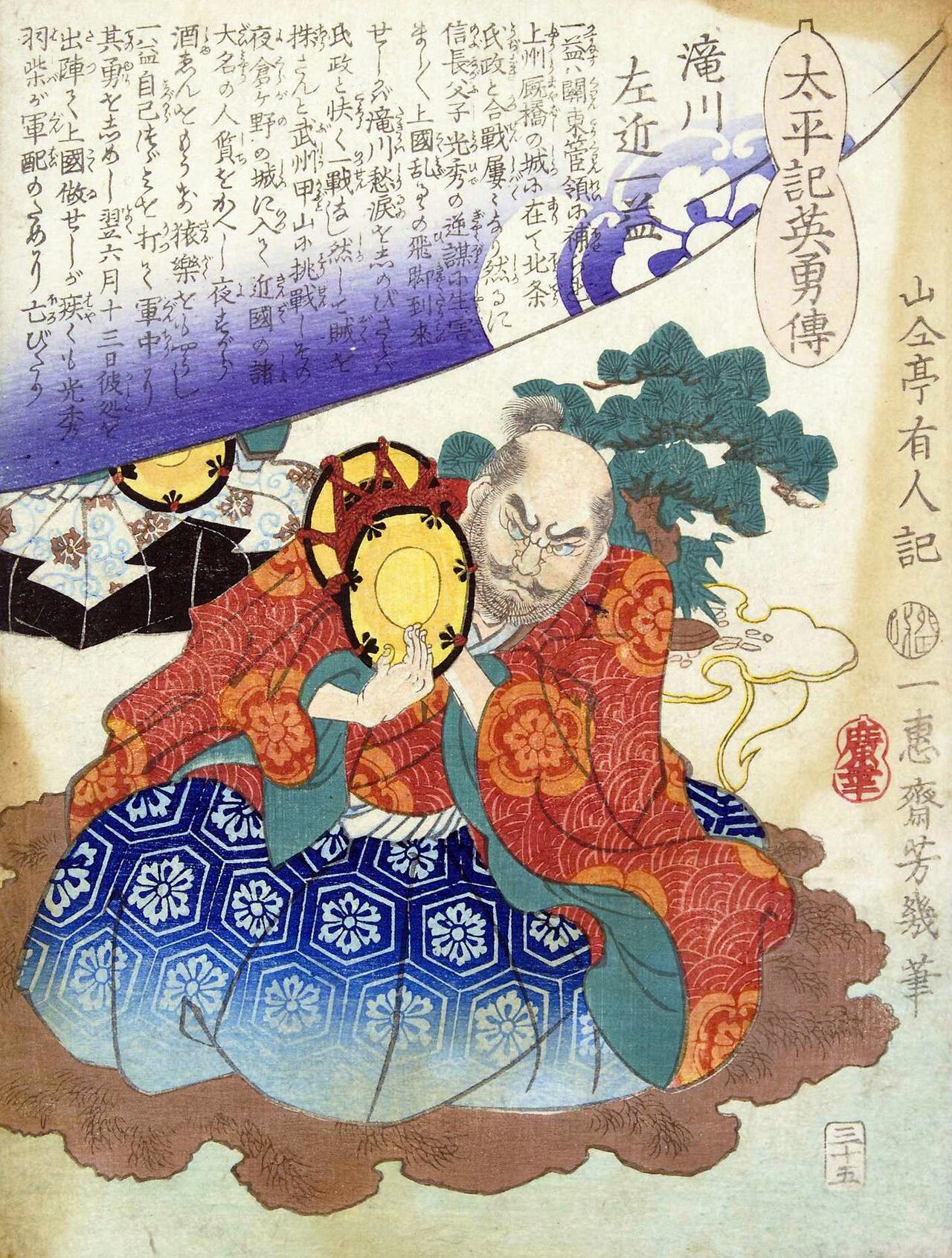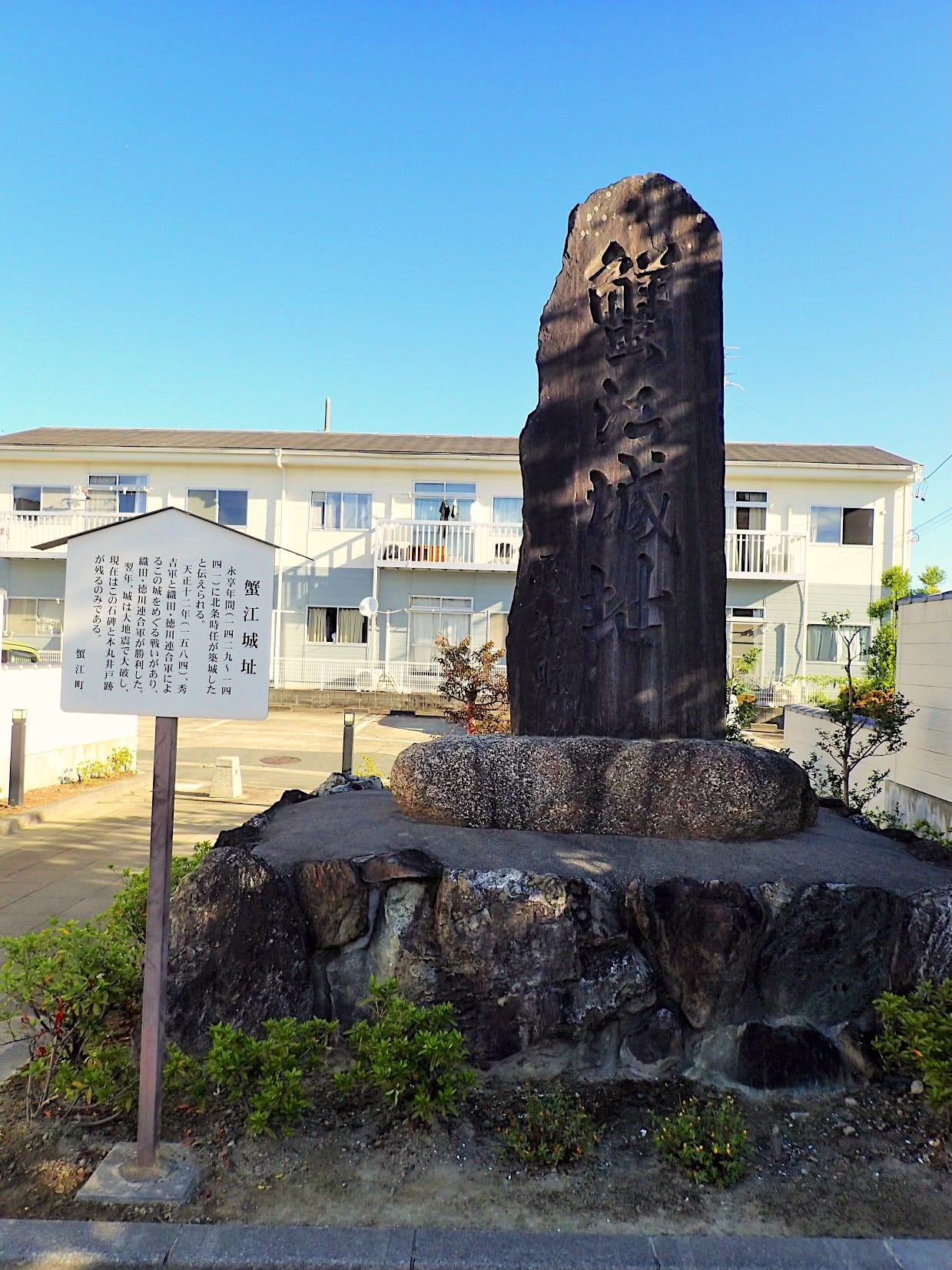The Siege of Kanie Castle was once described by an early Edo period scholar as being the most important victory of Tokugawa Ieyasu's life, akin to the Battle of Shizugatake being the greatest victory of Toyotomi Hideyoshi’s lifetime.
While that is certainly arguable, the Siege of Kanie Castle fought in June 1584 in the southwestern part of Owari Province (Western Aichi Prefecture) between the forces of Hashiba (Toyotomi) Hideyoshi and the joint troops of Oda Nobukatsu and Tokugawa Ieyasu was the final showdown in the prolonged and widespread Komaki Nagakute campaign. Although it was mainly a siege, it is also known as the Battle of Kanie.
Lead Up To The Battle
Oda Nobunaga and his heir had been killed two years earlier in the Honno-ji Incident of 1582. Hashiba (Toyotomi) Hideyoshi had then attacked and killed the perpetrator, Akechi Mitsuhide. The wily Hideyoshi had then begun to usurp Oda clan power and prestige to the chagrin of many of the Oda clan generals, leading to a splitting of the Oda clan and the subsequent Battle of Shizugatake in 1583. The victorious Hideyoshi then continued to rise in influence, but was countered by Nobunaga’s third son, Nobukatsu, who had called on Tokugawa Ieyasu to assist, leading to the 1584 Battle of Komaki Nagakute. While the combined forces of Nobukatsu and Ieyasu were gaining ground in the various battles in and around Komaki and Nagakute, Hideyoshi ordered his subordinate, Takigawa Kazumasu, to capture Kanie Castle in an attempt to turn the tide of the battle.
Kanie Castle
No historical documents revealing the full details of Kanie Castle remain, however Kanie Castle is said to have first been built as a fortress by Hojo Tokito in1429. After that, the Shiba clan, governors of Owari Province, developed it into a full castle, and in the 1530’s Watanabe Genjuro and his son Yosaburo took control. It was captured by Matsudaira Hirotada (father of Tokugawa Ieyasu), then an associate of the powerful Imagawa clan in 1555, later it came under the control of Oda Nobunaga, who ordered his subordinate, Takigawa Kazumasu, improve and reinforce it. After that, in 1583, Sakuma Masakatsu Nobuhide became the lord of the castle. It was a strategically important port and a major transportation hub with its southern sections facing Ise Bay.
By this time, Kanie Castle consisted of three inner citadels, the San-no-maru, Ni-no-maru and central Honmaru. The Honmaru (main citadel) was approximately 98m east to west, and around 90m north to south. The castle’s main gate, known as the Kaimonjiguchi, stood to the south, and a gate called Maedaguchi stood to the east. The castle was surrounded by three moats. Three smaller satellite castles, Maeda Castle, Ono Castle, and Shimoichiba Castle were built around Kanie Castle to protect it. From this, it is not difficult to imagine how important the Kanie area was at that time. There are records of several battles having taken place around Kanie Castle, but the battle that took place in 1584 between the allied forces of Oda Nobukatsu and Tokugawa Ieyasu and the forces of Takigawa Kazumasu, a subordinate of Hashiba Hideyoshi, is known as The Battle of Kanie.
Takigawa Kazumasa
Takigawa Kazumasa was a highly respected and competent general under Oda Nobunaga. Defeated by the usurper of the late Oda Nobunaga’s power, lands and influence, Toyotomi Hideyoshi in the 1583 Battle of Shizugatake, he bowed to Hideyoshi and joined the Toyotomi forces. Sakuma Masakatsu Nobuhide, a vassal of Oda Nobukatsu then became the castle’s master. Towards the end of the Battle of Komaki and Nagakute in 1584, it was captured by the then Toyotomi allied Takigawa Kazumasu, before being besieged by the armies of Ieyasu Tokugawa and Nobukatsu Oda and surrendered after half a month of intense fighting.
Lead Up To The Siege
In April 1584 following the numerous skirmishes that had resulted in a tactical victory for the Tokugawa, yet a strategic victory for the Toyotomi forces, creating a stalemate situation during the Battle of Komaki and Nagakute, Tokugawa Ieyasu returned to Kiyosu Castle, Oda Nobukatsu to his Kuwana Castle, and Toyotomi Hideyoshi restored himself to Osaka Castle.
In northwestern Owari, a large contingent of the remaining Hashiba forces surrounded Kaganoi Castle, Oku Castle, and Takegahana Castle in Mino Province (Gifu Prefecture) from May 4, and using mizu-zeme, water siege tactics, captured them one by one. Despite the losses, Ieyasu remained fast in Kiyosu Castle, refusing to be drawn out.
Hideyoshi then re-appointed the very able former general, Takigawa Kazumasu, and his eldest son Kazutada, with stipends of 3,000 koku and 12,000 koku, respectively, and ordered them to capture various castles.
Around that time, Sakuma Masakatsu Nobuhide, the lord of the Oda held Kanie Castle was ordered by Oda Nobukatsu to build a fort in Kayano, Ise Province, and so he left Kanie Castle in the care of his uncle Sakuma Nobutatsu and Maeda Nagasada (Tanesada), the lord of Maeda Castle.
The Attack
While Kanie’s lord Sakuma was away in Ise, Toyotomi allied Takigawa Kazumasu and naval commander Kuki Yoshitaka launched a surprise attack from the sea. The Kuki Navy with its Ataka-bune warships and 3,000 samurai under Takigawa Kazumasu appeared in Kanie Bay on the morning of June 16 and succeeded in capturing and occupying Kanie Castle. Behind this surprise attack was the secret betrayal of Sakuma's vassal, Maeda Tanetoshi, who was to supposed to defend the castle in the absence of its lord. At the same time, Maeda Castle, defended by Tanetoshi's son, and Shimoichiba Castle (also known as Shimojima Castle), defended by Tanetoshi's younger brother, also defected to Hideyoshi’s side, further strengthening the defenses of the newly occupied Kanie Castle.
Although Takigawa Kazumasu succeeded in taking Kanie Castle, he was unable to secure enough weapons and provisions in time to withstand a siege. It has been suggested that the ocean tides and currents prevented him from doing so during the surprise attack.
Despite the treachery occurring within the castles around him, Yamaguchi Shigemasa, who was only 20 years old at the time of this battle and the lord of Ono Castle — supposed to defend the west of Kanie Castle — refused to defect to Hideyoshi even though his mother was being held hostage. As the attacking forces approached Ono Castle, Yamaguchi’s samurai threw burning torches into their boats. Yamaguchi later became the first lord of the Hitachi Ushiku domain thanks to the connections made with the Tokugawa clan at this time. Meanwhile the Suzuki brothers serving within Kanie Castle also showed terrific resistance.
The Suzuki Brothers
The Suzuki brothers, Shigeyasu and Shigeharu, who played a lead role in the Battle of Kanie, were related to the Sakuma clan. Their father, Shigemune, is said to have been a cousin of Sakuma Masakatsu Nobuhide, the lord of Kanie Castle.
The elder brother, Shigeyasu, fiercely resisted the surprise attack by Takigawa forces and the betrayal of Maeda Tanetoshi by barricading himself in his mansion within Kanie Castle and fighting bravely against the invaders, but was killed in action. By this time, Shigeyasu had set fire to the area around his mansion to send up smoke signals, alerting Ieyasu, who was in Kiyosu Castle around three kilometers away, to the unusual situation at Kanie Castle.
The younger brother, Suzuki Shigeharu had meanwhile escaped from Kanie Castle and heading to warn Ieyasu in Kiyosu encountered the Tokugawa on his way to Kanie, where he was awarded with a spear for his loyalty. Following the Battle of Kanie, he rebuilt his mansion with timber he was given as a reward, and the surviving Suzuki clan resided in Kanie for generations.
Upon receiving the news of the fall of Kanie Castle, Oda Nobukatsu departed from his castle at Nagashima and rushed to Ono Castle with 2,000 samurai during the night and early day of the 16th, while Tokugawa Ieyasu led his troops from Kiyosu Castle and set up his headquarters in nearby Toda Village early in the morning of the 17th. Nobukatsu entered Ono Castle, while the Takigawa forces, having failed in their attack on Ono Castle, fled to Kanie Castle, and the Kuki forces entered Shimoichiba Castle.
The following day, June 18, Ieyasu and Nobukatsu led 20,000 samurai and surrounded the three castles of Kanie, Maeda, and Shimoichiba. Later that day, the Oda and Tokugawa forces launched a concentrated attack on Shimoichiba Castle, taking the castle and killing Maeda Nagatoshi. On June 19, Kuki Yoshitaka was defeated in the Battle of Funairi, thus completing the Oda Tokugawa forces’ naval blockade. With this complete, the attack on Kanie Castle commenced on the 20th with Ieyasu attacking from the east, while Nobukatsu attacked from the south and west.
By June 21, Hideyoshi had moved from Mino southwest to Sawayama Castle in Omi (Shiga Pref.). On June 22, Oda Nobukatsu and Tokugawa Ieyasu launched an all-out attack on Kanie Castle.
The samurai led by the Tokugawa’s finest general, Sakai Tadatsugu, who were tasked with bringing down the heavily fortified main Kaimonjiguchi gate, were exhausted from the fierce battles that had been going on for days, and in the evening, the samurai of Sakakibara Yasumasa and Matsudaira Ietada entered Kaimonjiguchi instead.
Takigawa Kazumasu tried counterattacking, storming out of the castle from each gate under cover of darkness, then by abandoning the San-no-maru and retreating into the Ni-no-maru, but he struggled at Kaimonjiguchi and the defending samurai led by Tanizaki Chuemon were soon surrounded. Tanizaki died days later of gunshot wounds sustained in action.
Takigawa Kazutada served as the rear guard of the retreat into the Ninomaru at Maedaguchi and is said to have engaged in a duel with Tokugawa Ieyasu’s cousin, lord Mizuno Katsunari at this time, with both sides receiving injuries.
Maeda Castle, defended by Maeda Nagatane was attacked by Tokugawa stalwarts Ishikawa Kazumasa and Abe Nobukatsu, and surrendered on June 23. Tokugawa Ieyasu then entered the castle accompanied by General Sakakibara Yasumasa. Hideyoshi learned of Kazumasu's capture of Kanie Castle the following day and relocated to Tsuchiyama in Omi (Shiga Prefecture) and then on the 25th moved to Mukamoto in Ise, from where he informed Kiso Yoshimasa of Shinano (Nagano Prefecture) of his plan to launch an all-out attack from the west of Oshu.
While at first the surprise attack and capture of Kanie, and the turning of the satellite castles seemed likely to succeed, Takigawa Kazumasu was forced into a difficult position by the above-mentioned resistance of lord Yamaguchi Shigemasa of Ono Castle, and the Suzuki brothers, as well as the superior numbers of the Nobukatsu-Ieyasu allied forces’ counterattack. After a siege lasting for two weeks, Kanie Castle finally fell, and the Oda Tokugawa allied forces succeeded in recapturing the castle.
On June 29, peace negotiations began.
As they were increasingly outnumbered, the besieged called on the negotiator services of Nobunaga’s younger brother Oda Yuraku to surrender to Nobukatsu. Ieyasu ordered that Maeda be executed as a rebel, and that Takigawa submit a written oath never again to raise weapons against Nobukatsu. Takigawa himself submitted the written oath, vacated the castle on July 2nd, and retreated to Kanbe in Ise. From this point on, Takigawa was made a homeless ronin, and it is said that he died in Echizen province in late 1586.
On July 3, Kanie Castle was handed over to the Tokugawa and Oda forces, but despite the peace treaty, Maeda Nagasada was killed while retreating, and Takigawa Kazumasu escaped and fled to Ise. However the Mikawa Monogatari states that on July 3 Takigawa Kazumasu escaped and was saved, but Maeda Nagasada was not allowed to escape, so he was killed along with his wife and children who were on the ship with him," Most researchers tend to not fully accept the Mikawa Monogatari as a factual source, whereas the later, highly credible and more factual Ietada Diary Supplement and the Komaki Jin Shimatsuki records state that "On July 2, his nephew Takigawa Genpachi killed the fleeing Nagasada, and Takigawa Kazumasu killed Maeda Nagasada, handing his cousin’s head to the Oda”. Takigawa fled to Kanbe Castle in Ise, but was suspected by Tomita Ippaku, who was guarding the castle, and denied entry into the castle, was driven back.
Hideyoshi had planned to gather 62,000 samurai troops including his younger brother and right-hand man, Hashiba Hidenaga, along with Niwa Nagashige, and Hori Hidemasa in Ise and launch an all-out attack from the western side of Owari on July 15th, but this plan was canceled because it was not realized in time.
After the Battle
On July 5th, Ieyasu entered Kuwana Castle. A week later on July 12th, as promised at the time of their appointment, Hideyoshi awarded Takigawa Kazumasu 3,000 koku of land and his son 12,000 koku of land. Ieyasu then returned to Kiyosu Castle the following day. Hideyoshi returned to Osaka Castle via Ogaki Castle arriving on July 29.
Ultimately, the Siege of Kanie Castle was to be Hideyoshi's last chance to defeat Ieyasu in the widespread and prolonged Battle of Komaki and Nagakute, but Hideyoshi failed to deploy his main forces at the Battle of Kanie Castle as well as at the Battle of Nagakute, losing his opportunity for a decisive victory.
Hideyoshi's Osaka based ruling government at the time was a collection of former Oda clan members including Gamo Ujisato, Sassa Narimasa, Niwa Nagahide, Hori Hidemasa, and Maeda Toshiie, and was unable to concentrate on the front line due to the northward advance of the revolting Saika and Negoro clans of Kii Province, the pressure of Chosokabe Motochika who had conquered Tosa, Awa, and Sanuki Provinces and was approaching the unification of Shikoku, and the advances of the Shimazu clan who seemed to have no enemies in Kyushu. Ieyasu's side was undoubtedly helped by the Toyotomi’s problems, but he also displayed fine leadership skills, his retainers were truly loyal, and he himself was always on the front line and able to take swift action.
The Takigawa clan were returned to feudal lord status as a result of this battle, but Kazumasa’s eldest son and heir, Kazutada, was exiled. Ieyasu had noticed the fine efforts of Kazumasa’s second son, Kazutoki (aka Ichitoki) who inherited the clan headship, and was later awarded 2,000 koku by Ieyasu.
Naval commander Kuki Yoshitaka served Hideyoshi directly as a feudal lord after this battle.
The End of Kanie
Oda Nobukatsu and Tokugawa Ieyasu then made a peace agreement with Hideyoshi’s forces, resulting in Kanie Castle never being restored. The ruins were believed to have been destroyed the following year by a major earthquake in 1585, and abandoned. According to one theory, Ieyasu developed the castle site into residential areas and farmland. Currently there are stone monuments of the castle ruins and remains of the wells in the former inner citadel.
The Battle of Komaki Nagakute, and this final Siege of Kanie Castle restored and cemented Ieyasu’s standing and value in Hideyoshi’s eyes, positioning him as a powerful ally, and a potentially dangerous rival to be controlled, appeased and watched. It no doubt set in motion the thought amongst his allies that Ieyasu was a likely candidate for the future ruler of Japan.










